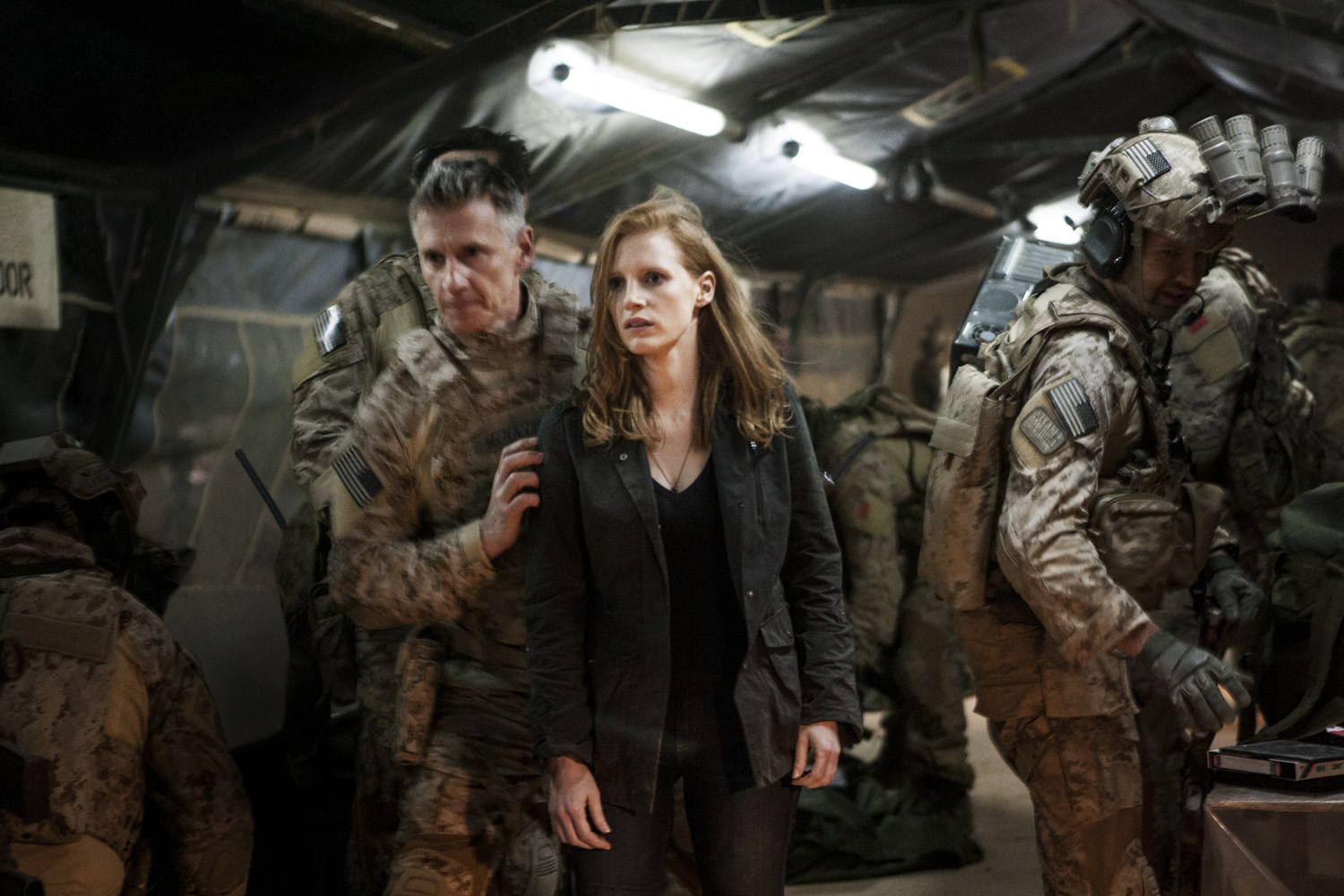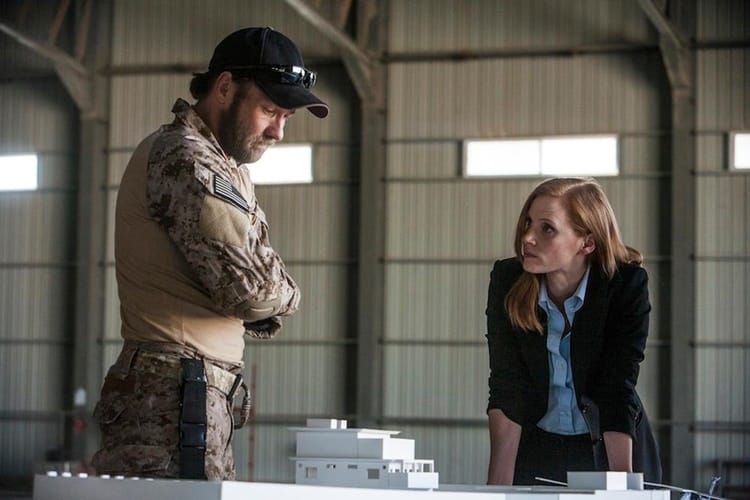Cinematic Elements: Movie Review Zero Dark Thirty

Zero Dark Thirty isn’t your average action flick; it’s a masterclass in cinematic tension-building, employing a range of techniques to keep you on the edge of your seat (and possibly needing a stiff drink afterwards). The film masterfully blends documentary-style realism with moments of breathtaking suspense, all carefully orchestrated through its cinematography, score, and editing.
The film’s cinematography is a key player in its success. Director Kathryn Bigelow uses a variety of shots and sequences to effectively convey the relentless pursuit of Bin Laden and the psychological toll it takes on the CIA operatives involved. Long, unbroken takes immerse the viewer in the gritty reality of the situation, while tightly framed close-ups reveal the characters’ inner turmoil. The use of handheld camerawork, especially during action sequences, creates a sense of immediacy and chaos, making the viewer feel like they’re right there in the thick of it. Conversely, static shots during interrogation scenes provide a stark contrast, emphasizing the power dynamics and the psychological pressure exerted.
Cinematography: Specific Shots and Sequences
The film’s use of shaky, handheld camerawork during high-stakes operations, such as the raid on a suspected safe house, heightens the sense of danger and uncertainty. This contrasts sharply with the more stable, observational shots used during quieter moments, like the lengthy interrogation scenes, allowing for a more intimate portrayal of the characters and their emotional states. A particularly striking example is the extended tracking shot following Maya (Jessica Chastain) through a bustling Pakistani marketplace, highlighting her vulnerability and the ever-present threat of discovery. The scene perfectly balances the chaotic energy of the surroundings with the focused determination of the character.
Score and Soundtrack
The film’s score, composed by Alexandre Desplat, is understated yet profoundly effective. It masterfully utilizes subtle musical cues to build suspense and amplify emotional moments. The use of drones and dissonant harmonies reflects the film’s overall tone of unease and moral ambiguity. The absence of a traditional, bombastic action score further underscores the film’s realistic portrayal of the CIA’s operations. The soundtrack, a blend of Middle Eastern music and ambient soundscapes, contributes to the immersive atmosphere, further grounding the narrative in its real-world setting. It avoids cliché action movie tropes, instead opting for a more nuanced and realistic approach.
Editing Style and Narrative Impact
The editing in Zero Dark Thirty is crucial to its narrative power. The film employs a non-linear structure, jumping between different time periods and locations, effectively building suspense and gradually revealing the complexity of the manhunt. The rapid cuts during action sequences heighten the tension and chaos, while the slower, more deliberate pacing during interrogation scenes allows for a deeper exploration of the characters’ motivations and psychological states. The editing style mirrors the fragmented and often chaotic nature of intelligence gathering, reflecting the uncertainty and ambiguity inherent in the mission.
Visual Representation of a Key Scene
Consider the scene where Maya first confronts Ammar, a key figure in the hunt for Bin Laden.
The scene opens with a medium shot of Ammar, sitting in a dimly lit room, his face partially obscured by shadow. The camera slowly pushes in, becoming a tight close-up as Maya begins her interrogation. The lighting is stark and harsh, emphasizing the power imbalance between the interrogator and the subject. The mise-en-scène is deliberately austere, with minimal props and a stark, almost clinical setting. The camera angles are predominantly low, emphasizing Ammar’s vulnerability and Maya’s dominance. As the tension escalates, the camera work becomes more dynamic, employing quick cuts and close-ups to highlight the emotional intensity of the confrontation. The overall effect is one of claustrophobia and mounting suspense, mirroring the psychological pressure exerted during the interrogation.
Critical Reception and Controversy

Zero Dark Thirty, Kathryn Bigelow’s gripping and controversial depiction of the hunt for Osama bin Laden, didn’t just hit theaters; it detonated a debate. The film, lauded for its intense realism and suspenseful pacing, also sparked a firestorm of criticism, igniting a passionate and often polarized discussion about its portrayal of torture, its political implications, and its overall accuracy. The ensuing critical maelstrom was as captivating as the film itself, revealing a deep divide in how audiences and critics perceived its artistic merit and ethical responsibilities.
The film’s reception was, to put it mildly, bifurcated. While many praised its technical achievements, intense atmosphere, and Jessica Chastain’s powerhouse performance, others condemned it for its alleged glorification of torture and its potentially misleading depiction of the events leading to bin Laden’s death. This wasn’t just a disagreement over artistic interpretation; it was a clash of values, political viewpoints, and ethical considerations. The controversy surrounding the film extended far beyond the usual movie-review chatter, spilling into political discourse and sparking heated debates about the morality of interrogation techniques and the responsibility of filmmakers to portray historical events accurately.
Positive Critical Responses, Movie review zero dark thirty
Many critics lauded Zero Dark Thirty for its immersive cinematic experience. The film was praised for its meticulous attention to detail, its suspenseful pacing that kept viewers on the edge of their seats, and its powerful performances, particularly Jessica Chastain’s portrayal of Maya, the CIA operative at the heart of the hunt. Reviewers often highlighted the film’s realistic depiction of the clandestine world of counterterrorism, noting its gritty and unflinching portrayal of the challenges and complexities faced by intelligence operatives. The film’s technical achievements, including its cinematography and sound design, were also frequently cited as contributing to its overall impact. For example, Roger Ebert’s review (though posthumously published) highlighted the film’s intensity and realism, praising its immersive quality and the performances of its actors.
Negative Critical Responses and Specific Criticisms
Conversely, a significant portion of criticism centered on the film’s depiction of torture and its potential implications. Critics argued that the film implicitly, if not explicitly, endorsed the use of enhanced interrogation techniques by portraying them as instrumental in obtaining crucial intelligence leading to bin Laden’s location. The concern wasn’t simply about the graphic depiction of violence, but the suggestion that torture was a necessary evil, a justifiable means to a desirable end. Some critics felt the film lacked sufficient nuance in its portrayal of the moral ambiguities surrounding these techniques. For instance, the American Civil Liberties Union (ACLU) publicly criticized the film for its potential to legitimize torture. Furthermore, questions were raised about the film’s historical accuracy, with some arguing that it exaggerated the role of torture in the intelligence gathering process.
Controversies Surrounding the Film’s Portrayal of Torture and Political Implications
The controversy surrounding Zero Dark Thirty’s portrayal of torture ignited a wider debate about the ethics of filmmaking and its responsibility to historical accuracy. The film’s release coincided with ongoing discussions about the legality and morality of enhanced interrogation techniques, making its depiction particularly sensitive and politically charged. The debate extended beyond simple artistic interpretation, touching upon the potential for the film to influence public opinion on controversial government policies and the role of media in shaping perceptions of national security. The film’s creators defended their work, arguing for artistic license and the need to depict the complexities of the situation, but this only fueled the fire of the ongoing discussion. The film became a lightning rod for larger discussions about the relationship between art, politics, and the ethical implications of portraying sensitive real-world events.
Categorization of Viewpoints
The diverse critical responses to Zero Dark Thirty can be categorized as follows:
- Praise for Cinematic Achievement: This category encompasses positive reviews focusing on the film’s technical brilliance, acting, directing, and overall immersive quality.
- Criticism of Torture Depiction: This category includes critiques centered on the film’s perceived glorification or justification of torture, its ethical implications, and its potential impact on public perception of interrogation methods.
- Concerns Regarding Historical Accuracy: This category highlights concerns about the film’s factual accuracy, particularly regarding the role of torture in obtaining intelligence leading to bin Laden’s death.
- Political Implications and Bias: This category encompasses criticisms regarding the film’s potential political bias, its influence on public opinion, and its responsibility to portray a balanced and nuanced perspective on a complex historical event.